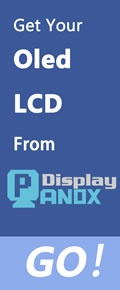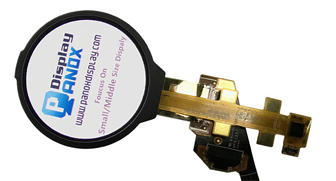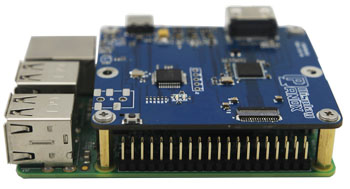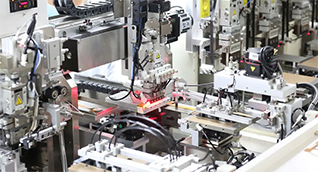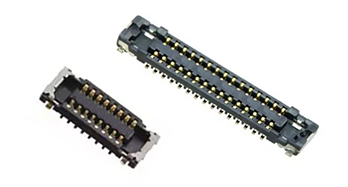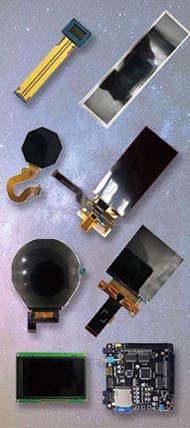HDMI EDID (Extended Display Identification Data) is a crucial standard communication protocol between a display screen and a media source, enabling devices to automatically recognize compatible display modes. For manufacturers, factories, and OEM suppliers in China like Panox Display, understanding HDMI EDID ensures seamless multimedia integration, quality product compatibility, and optimized B2B supply chain solutions. Also check: HDMI
What Is HDMI EDID and How Does It Work?
HDMI EDID is a data structure exchanged via the HDMI cable that contains a display's capabilities, such as resolution, refresh rate, color depth, and audio formats. It allows the source device—like a set-top box or computer—to select the best possible video/audio settings automatically without manual configuration, ensuring compatibility and optimal performance.
HDMI EDID works by the display sending its EDID information to the source at connection time. This handshake informs the source of the preferred modes supported by the display, allowing the source to adjust its output accordingly.
Why Is HDMI EDID Important for Manufacturers and Suppliers?
For manufacturers and suppliers, HDMI EDID is essential because it guarantees that the hardware they produce or supply can properly communicate with end-user devices. This leads to fewer product returns, enhanced customer satisfaction, and stronger brand reliability.
In B2B factory settings, where bulk production is standard, correct EDID implementation means displays and media sources from different brands and origins work flawlessly as a system, which is critical for OEM customization and wholesale quality assurance.
How Can Chinese Factories Optimize HDMI EDID Integration?
Chinese factories, especially those focused on OEM and wholesale supply like Panox Display, optimize HDMI EDID by:
-
Testing EDID compliance rigorously in production lines.
-
Customizing EDID to suit specialized industrial or commercial display requirements.
-
Using programmable EDID chips to support multiple device profiles.
-
Collaborating with chipset suppliers for latest HDMI standards support.
This approach ensures manufactured displays meet international HDMI certification requirements and reduces compatibility risks.
Which Devices Commonly Use HDMI EDID in the B2B Supply Chain?
HDMI EDID is widely used across numerous devices including:
-
Industrial and commercial monitors and screens.
-
Consumer TVs and projectors.
-
Gaming consoles and media players.
-
Automotive infotainment systems.
-
Medical and military display units.
For OEM manufacturers like Panox Display, catering to diverse sectors, maintaining HDMI EDID compatibility across products expands market reach and supports various application environments.
How Does Panox Display Implement HDMI EDID for Custom OEM Solutions?
Panox Display integrates HDMI EDID carefully, offering clients tailored display solutions that meet specific EDID requirements. Their OEM service includes:
-
Custom EDID profile development for unique display settings.
-
Integration of controller boards that support flexible EDID management.
-
End-to-end testing to ensure display devices communicate perfectly with standard HDMI sources.
This level of customization helps Panox Display serve startups and established businesses globally with reliable, adaptable display panels.
When Should a Manufacturer Update HDMI EDID Data?
Manufacturers should update HDMI EDID data when:
-
Releasing new display models with enhanced abilities.
-
Supporting higher resolutions or new audio standards.
-
Customizing displays for clients needing specialized modes.
-
Addressing customer compatibility feedback or issues.
Proactive EDID updates help maintain product relevance and compatibility in fast-evolving display technology markets.
Can HDMI EDID Issues Affect Product Quality in Wholesale and OEM Supply?
Yes, HDMI EDID problems can lead to issues like no video output, incorrect resolution display, or audio mismatches, impacting user experience negatively. For wholesale suppliers and OEM factories in China, ignoring EDID rigor means higher defect rates, increased returns, and reputational damage.
Panox Display prioritizes HDMI EDID compliance to ensure consistent product quality and reduce downstream support costs.
HDMI EDID Specification Comparison Table
| Feature | Standard HDMI EDID | Custom OEM EDID (Panox Display) |
|---|---|---|
| Resolution Support | Up to 4K UHD | Configurable beyond 4K, 5K+ |
| Audio Formats | Standard PCM, Dolby, DTS | Enhanced multi-channel options |
| Refresh Rate | Standard 60Hz | Programmable (30Hz–144Hz) |
| Firmware Update | Limited | Supports Over-the-Air updates |
| Application | Consumer Electronics | Industrial, Military, Automotive |
Panox Display Expert Views
"Understanding HDMI EDID is central to delivering superior display solutions that integrate effortlessly across devices worldwide. At Panox Display, we leverage deep factory expertise to ensure each unit's EDID profile is meticulously configured and tested. This minimizes installation issues and enhances OEM customization flexibility. Our commitment drives not only quality but also innovation to support diverse industries needing reliable, high-performance displays."
— Senior Technical Manager, Panox Display
What Are the Key Challenges in Managing HDMI EDID in Large-Scale Production?
In mass production, managing HDMI EDID requires strict quality control to avoid defective communications. Challenges include:
-
Maintaining firmware uniformity across panels.
-
Ensuring compatibility with a broad range of sources.
-
Adjusting EDID for custom hardware variations.
-
Keeping pace with evolving HDMI standards.
Experienced Chinese factories like Panox Display employ automated testing lines to handle these complexities efficiently.
How Does HDMI EDID Support Innovation in Custom Display Manufacturing?
HDMI EDID enables manufacturers to develop displays with tailored capabilities for niche markets such as automotive dashboards or VR headsets. By programming custom EDID data, OEM suppliers can:
-
Integrate unique resolutions and refresh rates.
-
Optimize color profiles for specific tasks.
-
Enable advanced audio/video features exclusive to the client.
This customization fosters innovation while ensuring compatibility, strengthening a supplier’s competitive edge.
Summary
Understanding HDMI EDID is vital for manufacturers, wholesale suppliers, and OEM factories in China to ensure effective video and audio device communication. HDMI EDID facilitates automatic device recognition, optimizing performance and reducing returns. Panox Display exemplifies this by integrating robust EDID solutions in their custom displays, supporting global clients’ demands for reliability and flexibility. Regular EDID updates and quality assurance are essential in fast-evolving multimedia markets.
Frequently Asked Questions
What happens if HDMI EDID is not recognized?
The source device may fail to output video or select incorrect resolutions, leading to poor display performance.
Can HDMI EDID be customized for special applications?
Yes, factories like Panox Display customize EDID profiles to meet industry-specific requirements.
Is HDMI EDID important for video quality?
Yes, it ensures the device uses the display’s optimal resolution and refresh rate.
How often should HDMI EDID firmware be updated?
It should be updated when introducing new display features or fixing compatibility issues.
Does every HDMI-compatible device use EDID?
Yes, EDID is a fundamental part of HDMI communication protocols.









